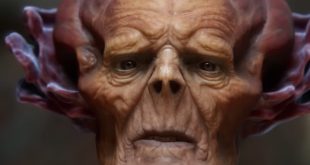Pay a visit to the demos gallery at the Unity 3 website, and you’ll be greeted by an impressive interactive showcase of the engine’s new power.
A military helicopter cuts its way though sun-kissed clouds before touching down in a war torn jungle. On landing, a sincerely impressive third-person modern combat shooter unfolds. Tinker with the various graphics menus available, and you’ll witness something quite spectacular within in the increasingly capable realm of the browser game. Welcome to Bootcamp.
“We wanted to do something unique, that simulates a real game situation both for the player and for the developers who look into it; something beautiful,” states Maurício Longoni, technology and development director at Aquiris, the Brazilian creator of Bootcamp.
Creating the game demo, which features interior and exterior scenes, destructible scenery, varied gameplay objectives and an array of ambitious environmental effects, allowed Longoni and his team to
familiarise themselves with many of Unity 3’s key features.
“The Bootcamp demo explores a lot with the Beast Lightmapping tool,” he confirms.
Thanks to Unity 3’s new lightmapping functionality, Aquiris were able to apply a good quality lightning bake and take advantage of high-end blends with the realtime shadowing.
“Unity 3’s lightmapping tool is absolutely amazing,” adds Longoni. “It saves time as you don’t need to bake the light in the 3D application such as 3DS Max. Since it’s inside Unity Editor, you don’t need to worry about grouping objects together in 3DS Max to optimise the atlasing of the light textures; it makes it automatically. It also reads the UV from your 3D app with your own organisation for the light textures, or it can unwrap the objects automatically if you want.”
Longoni and his colleagues were also able to get the occlusion culling system working immediately out of the box, boosting their performance with minimum effort. “Just integrating the occlusion culling in one of our games brought the draw calls number down from 400 to 50, with no effort,” explains the clearly smitten developer, adding: “The occlusion culling system is essential when we talk about big and detailed levels, such as in Bootcamp’s industrial scene, where we have tons of small objects, dummy enemies, the buildings and so on. A lot of things are occluded by the buildings and don’t have to be rendered.
Occlusion culling makes it possible; it stores a file with the information of each visible object from each cell where the camera can be, so it doesn’t render what is not seen by that camera.”
What’s more, Bootcamp allowed Aquiris to use Unity as a level editor.
“It’s powerful,” confirms Longoni. “It has smart snapping and takes care of the bunch of individual objects via static batching. We have also developed our own Decal system – via Unity’s Extensible Editor tools – to decorate the levels and add the bullet marks.
To play the Bootcamp demo visit
www.unity3d.com/gallery/live-demos.
Aquiris Knowledge
Established in 2006, Aquiris initially specialised in virtual reality projects for the aviation and architecture markets. At the start of 2008, the Brazilian outfit moved into the games space, and has currently created 13 titles, crafting branded games for the likes of Gillette, Chevrolet and Unilever.
The company was formed by art director Amilton Diesel, creative director Israel Mendes and Maurício Longoni, who serves as technology and development director.
www.aquiris.com.br

 MCV/DEVELOP News, events, research and jobs from the games industry
MCV/DEVELOP News, events, research and jobs from the games industry



